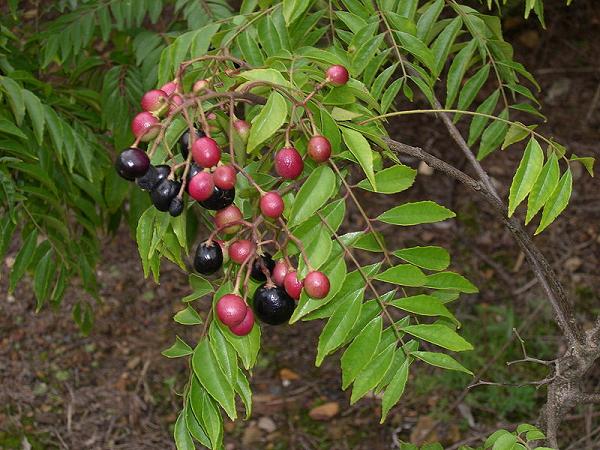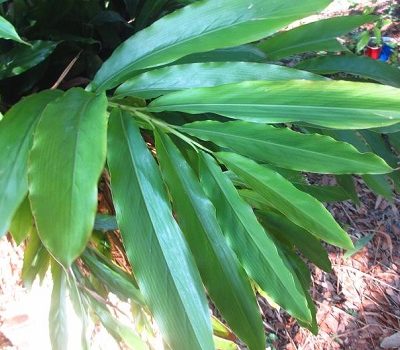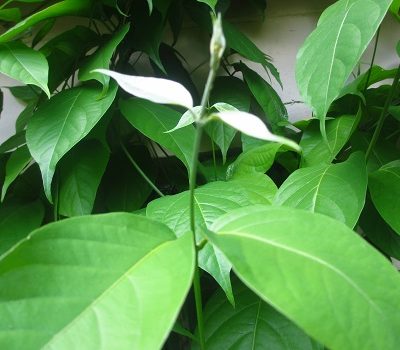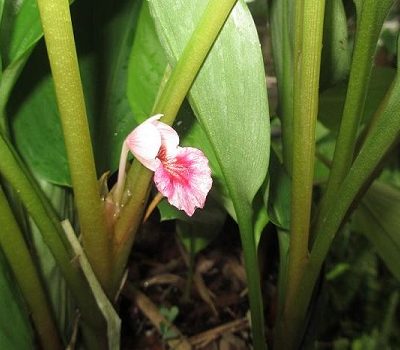Curry Leaf Tree
The leaves of the curry plant are one of the most commonly used of all of the spices in India. A curry is incomplete without the nutty flavor of this spice. The flavor does not taste like curry on its own. It has a highly aromatic nutty flavor.
One has only to brush the leaves of the tree, to be surrounded by the overwhelming aroma. As well as in curries, I use the leaves in many western dishes, such as soups, stews, and chili.
The best way to use the leaves, is to let them fry in the oil or butter, as you are browning onions or other vegetables for a dish.
The curry plant also produces edible fruit. The smal black berries are produced in the Summer, following the highly fragrant clusters of white flowers. The seeds are reported to be poisonous.
This plant is often confused with another plant of the same common name. The Italian curry plant (Helichrysum italicum) resembles lavender or rosemary, and smells like curry, but is inedible.
Origin
India, and neighboring countries.
Binomial nomenclature
Murraya koenigii
Description
A small shrub with attractive bipinate compound leaves. The white fragrant flowers are borne on a terminal cyme. Suckers grow from the roots of adult specimens. These can emerge several feet from the plant. In more temperate climates, they form root suckers less frequently. In tropical climates, as a landscaping plant, they can be invasive.
Height
20′ but this plant is easily kept as a low dense bush.
Temperature/Zone
Zone 9, 250F. Though this plant is a tropical tree, it survives brief frost surprisingly well. My specimen has survived temperatures down to 180F. It did sustain damage to is foliage, but it grew right back in the spring.
Light
Part shade to full sun.
Water
This plant likes monsoon weather patterns. Keep them evenly moist during the warm months, but allow them to dry out during the winter.
Fertilizer
I use an all purpose fertilizer. Do not fertilize during the Winter.
Cultivation
It is important to note that this tree has very brittle roots, which are easily damaged when transplanting. When replanting do not break up the root ball as you would for many other plants, even if the plant is rootbound, as it could cause severe shock, and even death. This plant is not known to invade pipes or damage foundations.
Pests
Curry leaf trees are not prone to pests or disease.










Curry leaf free how about that plants how I can fine or you can let me find the plants please
I have them now. email me ifyou are still interested.
Yes but not to citrus growing states outside of Florida. I can ship to Northern states where citrus is not grown.
Yes, I am interested in a couple of plants of Murraya koenigii. Do you still have them please?
Hi just wanted to know if Murraya koenigii plant is still available
Yes I have them. Email me at randystropicalplants@gmail.com